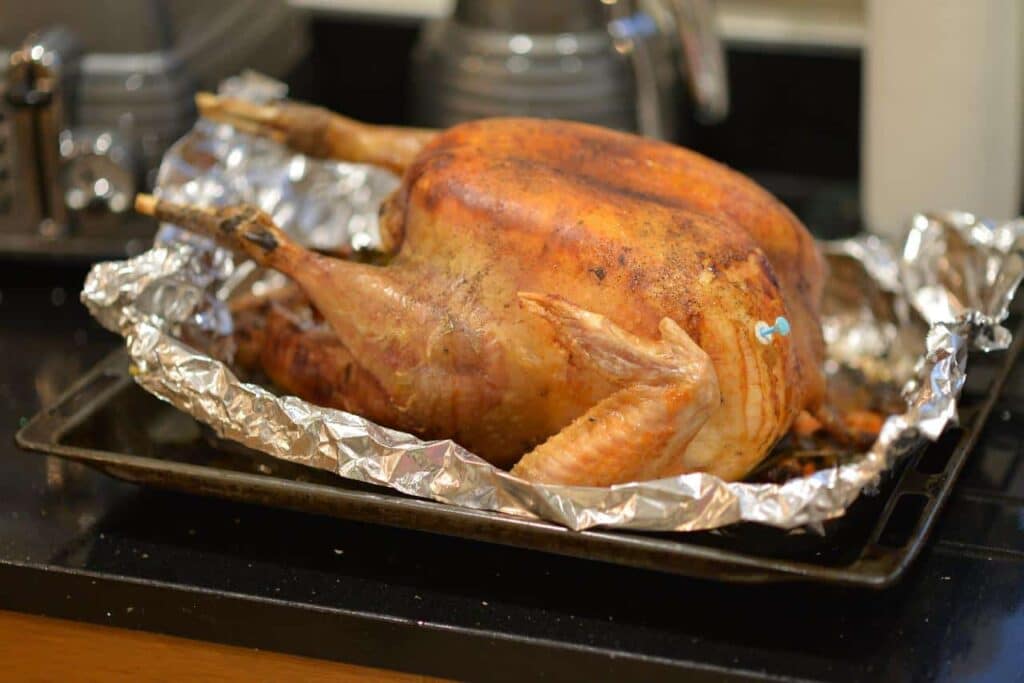The centerpiece of many holiday meals is a perfectly roasted turkey. But undercooked turkey breast can quickly turn your festivities into a fiasco. In this article, we’ll explore how to identify undercooked turkey breast and techniques to save your bird.
What Does Undercooked Turkey Breast Look Like?
Spotting an undercooked turkey breast is easier than you may think Here are the telltale signs to look out for
-
Color – The meat will appear pink or red rather than white or brown Interior areas near the bone will likely be the most underdone
-
Texture – Undercooked meat will have a soft, mushy texture and feel rubbery or gelatinous to the touch. Properly cooked breast meat should be firm.
-
Juices – When pierced with a knife or fork, the juices that run out will be clear or pinkish rather than white or yellow.
-
Temperature – Using an instant-read thermometer is the best way to assess doneness. Turkey breast should reach an internal temperature of 165°F.
Pay special attention to the thicker part of the breast, near the bone, as it takes longest to cook. If the meat is still pink and spongy in these areas, you’ve got an underdone bird on your hands.
Health Risks of Undercooked Turkey
Eating raw or undercooked turkey poses a health risk, as it can harbor dangerous bacteria that cause foodborne illness. The main organisms of concern are Salmonella, Campylobacter, and Clostridium perfringens.
Common symptoms of food poisoning from undercooked turkey include:
-
Stomach cramps, nausea, vomiting, and diarrhea – usually within 12-72 hours after eating tainted meat.
-
Fever, headache, and body aches from salmonellosis.
-
Bloody diarrhea from campylobacter infection.
-
Abdominal cramping from C. perfringens toxins.
At-risk groups like the elderly, pregnant women, young children, and those with weakened immune systems are more likely to develop severe complications from foodborne bacteria. So properly cooking turkey to a safe internal temperature is crucial.
How to Fix Undercooked Turkey Breast
If you discover some pinkness in your sliced turkey breast, you may be able to salvage it. Here are some tips:
-
Cut into sections – Slice off the undercooked portions and divide into smaller pieces to promote even cooking.
-
Use a meat thermometer – Track the internal temperature as you reheat. Breast meat is safe at 165°F.
-
Adjust oven temperature – Bake at 400°F to quickly and safely finish cooking without overdrying.
-
Add moisture – Baste pieces with turkey juices, stock or broth to prevent drying out. Tent foil loosely over top.
-
Check often – Monitor every 5-10 minutes and remove immediately once 165°F is reached.
-
Rest before serving – Let turkey sit 5-10 minutes before slicing to allow juices to redistribute.Add any accumulated juices back to the carved meat.
With close attention, you can heat undercooked turkey breast to a safe temperature without turning it into jerky. Just be sure to discard any meat that looks or smells bad.
Tips to Roast Turkey Breast Perfectly
Preventing undercooked turkey begins with proper roasting technique:
-
Use a meat thermometer – Insert into the thickest part without touching bone. Verify final temp reaches 165°F.
-
Calculate roasting time – Plan for 15-18 minutes per pound at 325°F for bone-in breast. Up to 10 minutes less for boneless.
-
Preheat adequately – Allow oven to fully preheat before cooking. Use a thermometer to check.
-
Watch carefully – Begin checking temperature about halfway through estimated cook time.
-
Rest before carving – Let sit 20-30 minutes before slicing to allow juices to redistribute.
-
Shield if overbrowning – Loosely tent foil over top if skin over-browns before center is cooked through.
Follow proper handling and thawing procedures as well. And never leave turkey breast or any perishable food sitting in the “danger zone” between 40-140°F for over 2 hours before cooking.
What If It’s Still Pink After Reheating?
If your turkey breast still has a rosy hue even after hitting 165°F, don’t panic. The meat may retain some pinkness, especially near the bone, due to the pigment myoglobin. As long as the temperature and texture indicate it’s fully cooked, slightly pink meat is safe to eat. Just be sure to verify doneness with a food thermometer for safety.
Enjoy Moist, Delicious Turkey Breast
Undercooked poultry can put a damper on your holiday dinner. But armed with the right techniques, you can identify, fix, and prevent it. With good thermometer hygiene and proper roasting guidelines, you’ll turn out juicy, flavorful turkey breast the whole family will love.

How can you tell if turkey breast is undercooked?
FAQ
How to tell if turkey breast is undercooked?
Is it OK if turkey breast is slightly pink?
What happens if you eat slightly undercooked turkey?
Can turkey reach 165 but still be pink?
